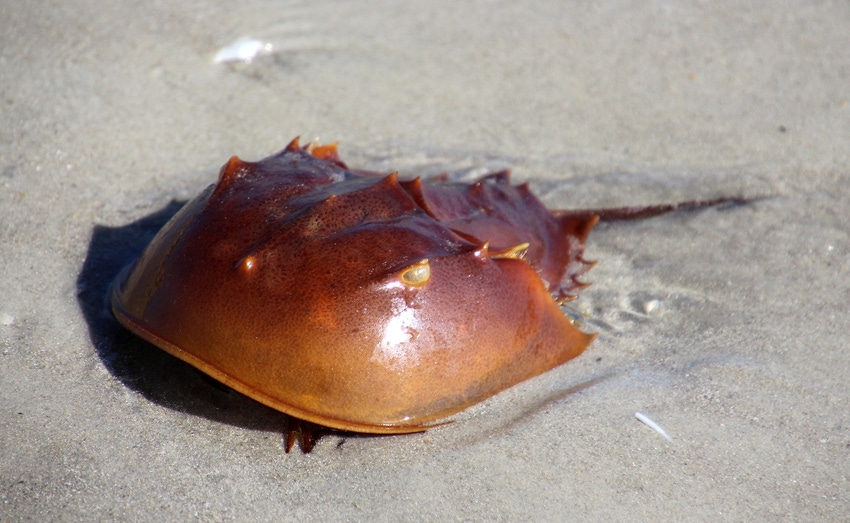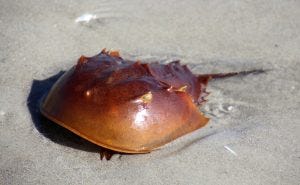Content Spotlight
Podcast: MilliporeSigma says education vital to creating unbreakable chain for sustainability
MilliporeSigma discusses the importance of people, education, and the benefits of embracing discomfort to bolster sustainability efforts.

The industry relies on horseshoe crab blood for endotoxin testing. These marine arthropods are endangered but the race to manufacture COVID-19 vaccines in large volumes is placing them under further threat.
Often referred to as ‘living fossils’, horseshoe crabs have inhabited the Earth for more than 450 million years. For drugmakers, it is the horseshoe crab’s blue blood that has remained a fascination and until recently a necessity .
The chemicals in the crab’s blood can react to harmful bacteria that could potentially contaminate any shot (anything that might go inside the human body) and seriously harm the patient. This process is called limulus amebocyte lysate (LAL). Limilus stands for the species of the horseshoe crab, amebocyte refers to the cells in the crab’s blood, and lysate is the unrestrained matter from the cells once broken that show bacterial toxins.

Image/iStock: Tamara528
Buglife is a British-based nature conservation charity and is the only organization in Europe dedicated to the protection of all invertebrates.
Buglife’s CEO, Matt Shardlow told BioProcess Insider that those harvesting the crab’s blood claim “because the blood of the crabs is already widely used the amount needed for COVID vaccines represents a fairly small percentage increase in the supply required.
“For an endangered species that is in decline, even a fairly small increase in fatality [could] add to the risks of extinction,” though Shardlow added it is not being contested by main industry experts.
According to Buglife, hundreds of thousands of the marine arthropods are caught and transferred to laboratories to drain their blood from a vein near their heart. While the US releases the crabs with around 15% (50,000) of them dying, in China, 100% of the bled crabs die as they are sold for food and chitin – a derivative of glucose – production.
Other pressures that endanger the crabs include bait catching, habitat loss as seawalls stand where they lay their eggs, and pollution.
“The main threat is the use of the crabs for bait, in the US the species could be added to the Endangered Species Act and taking and killing for bait out lawed,” Shardlow said. “In China the species could also be protected from use in bait and animals that have been bled could be required to be returned to the sea alive.”
As conservationists call for increased protection for the crabs and push towards synthesised versions of the protein being used, the horseshoe crab is still the preferred method of endotoxin testing across the globe.
Contract development manufacturing organization (CDMO) Lonza says it is one of three leading manufacturers of LAL endotoxin products and has nearly fifty years’ experience using this type of testing.
“Horseshoe crabs are collected from June until November after the major spawning season and brought to our blood collection center, where we collect a portion of their blue blood for the production of LAL,” Allen Burgenson, Lonza’s global subject matter expert for endotoxin testing solutions told us.
The process from start to finish takes under 24 hours to complete. “Despite all of our best efforts, some of the animals will not survive the process,” said Burgenson. “However, those numbers are very low and are usually less than 5% of the animals collected.”
To minimize any mortality related to LAL production, Burgenson said Lonza meets or exceeds “the handling requirements established by a consortium of various State Departments of Natural Resources (DNR) and the Atlantic States Marine Fisheries Commision (ASMFC).”
But the firm has also invested in synthetic forms of endotoxin testing and currently sells both LAL and recombinant factor C, which is the animal-free synthetic endotoxin testing method.
In 2003, the firm launched PyroGene – a recombinant factor C Assay which provides a more sustainable alternative to LAL-based methods that use horseshoe crab blood as their main ingredient.
“Lonza was the innovator in developing and commercializing the first recombinant Factor C (PyroGene rFC assay) in 2003 as an alternative to the standard LAL assay and has promoted its use since that time,” said Burgenson.
However, despite PyroGene becoming available in 2003, the industry has only recently begun to opt for the synthetic alternative.
Various factors can be attributed as to why pharmaceutical companies did not buy into the synthetic alternative. Of course, the companies who bled crabs stood to lose large amounts of money if recombinant Factor C became widely accepted. Worry also bred from the fact that Lonza was the only supplier of this type of endotoxin testing, which meant companies had to rely on a single supplier for an integral part of their manufacturing process. This posed questions, such as ‘What if something happened to Lonza and its manufacturing facilities?’
In 2013, Eli Lilly decided to test all its new products using recombinant Factor C. However, it took five years for a treatment using the synthetic endotoxin method to be approved. In 2018, Eli Lilly’s migraine treatment, Emgality (galcanezumab-gnlm) became the first US food and drug administration (FDA) approved medication that used the PyroGene method over the traditional LAL-based test.
You May Also Like